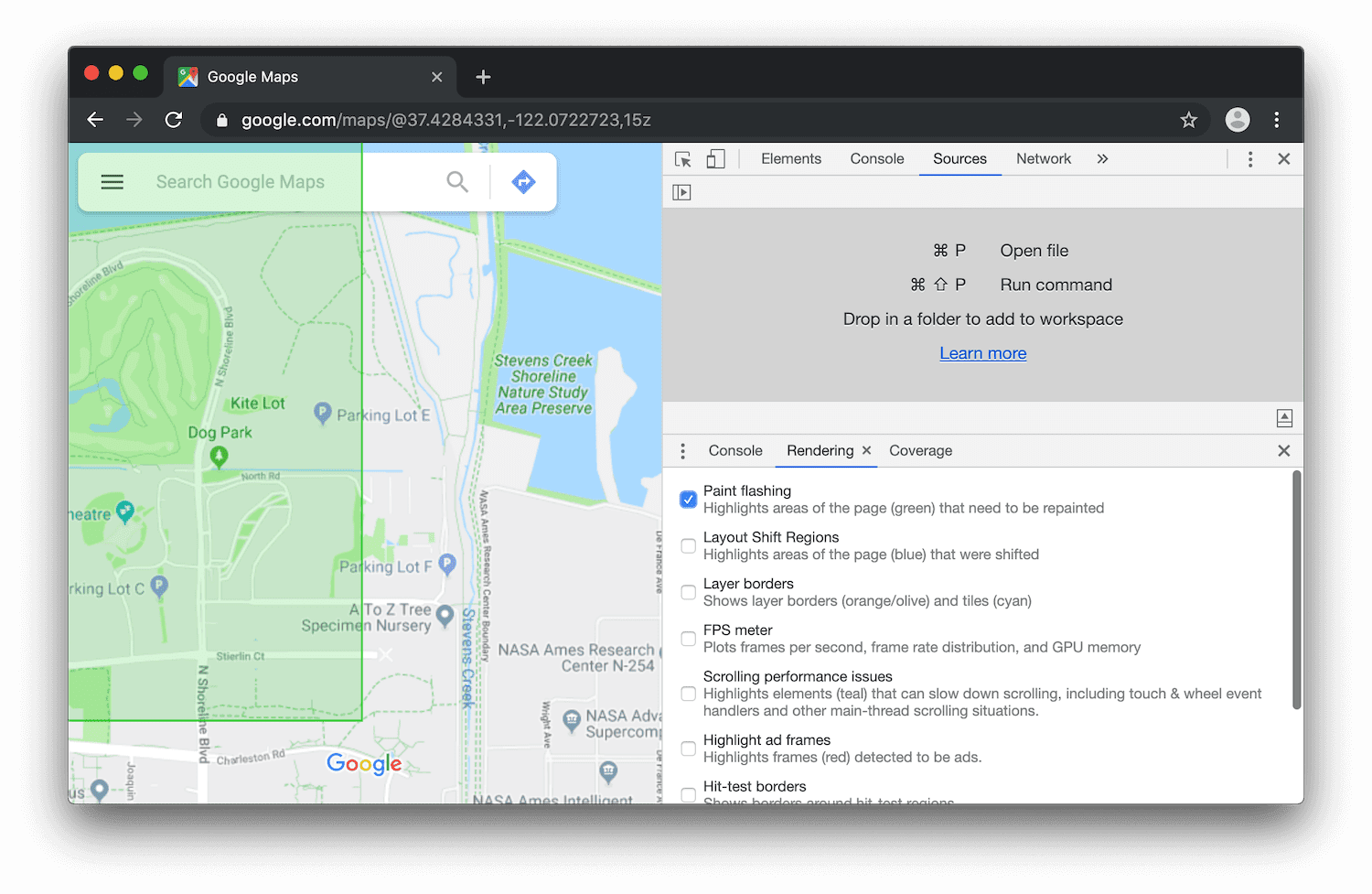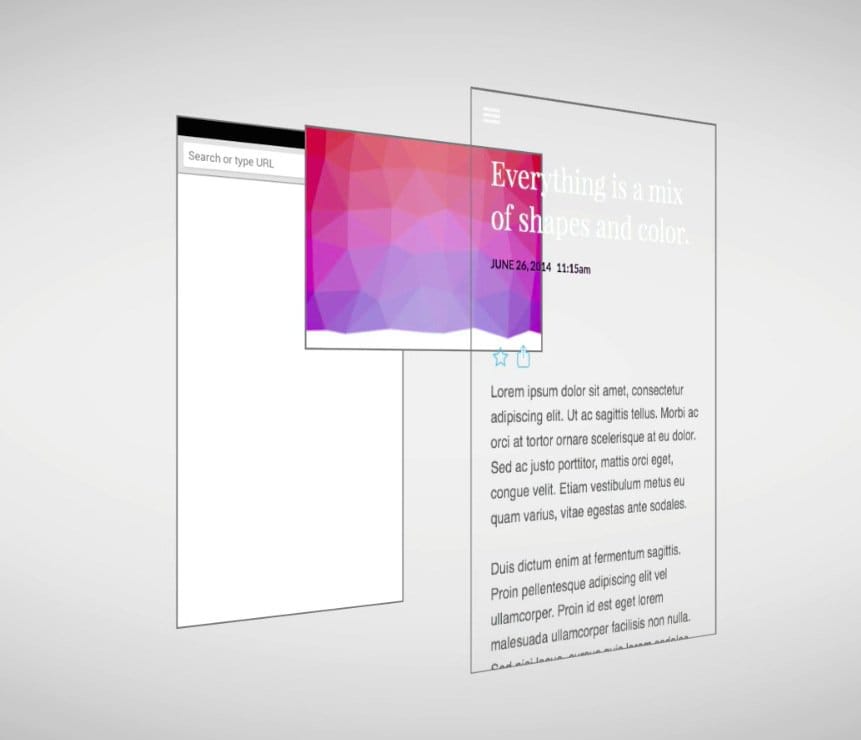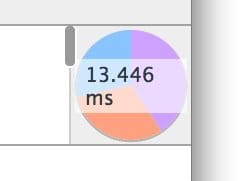Paint is the process of filling in pixels that eventually get composited to the user's screen. It's often the longest-running of all tasks in the pipeline, and one to avoid if at all possible.
Summary
- Changing any property apart from transforms or opacity always triggers paint.
- Paint is often the most expensive part of the pixel pipeline. Avoid it where you can.
- Reduce paint areas through layer promotion and orchestration of animations.
- Use the Chrome DevTools paint profiler to assess paint complexity and cost; reduce where you can.
How layout and paint are triggered
If you trigger layout, you will always trigger paint, since changing the geometry of any element means its pixels need fixing!

You can also trigger paint if you change non-geometric properties, like backgrounds, text color, or shadows. In those cases, layout won't be needed and the pipeline will look like this:

Use Chrome DevTools to quickly identify paint bottlenecks
You can use Chrome DevTools to quickly identify areas that are being painted. Open the Rendering tab and then enable Paint Flashing.
With this option enabled, Chrome will flash the screen green whenever painting happens. If you're seeing the whole screen flash green, or areas of the screen that you didn't think should be painted, then you should dig in a little further.

Promote elements that move or fade
Painting is not always done into a single image in memory. In fact, it's possible for the browser to paint into multiple images, or compositor layers, if necessary.

The benefit of this approach is that elements that are regularly repainted, or are moving on screen with transforms, can be handled without affecting other elements. This is the same as with art packages like Sketch, GIMP, or Photoshop, where individual layers can be handled and composited on top of each other to create the final image.
The best way to create a new layer is to use the will-change CSS property which is available in all major modern browser engines. Using a value of transform, will-change will create a new compositor layer:
.moving-element {
will-change: transform;
}
Care must be taken not to create too many layers, however, as each layer requires both memory and management. There is more information on this in the Stick to compositor-only properties and manage layer count section.
If you have promoted an element to a new layer, use DevTools to confirm that doing so has given you a performance benefit. Don't promote elements without profiling.
Reduce paint areas
Sometimes, however, despite promoting elements, paint work is still necessary. A large challenge of paint issues is that browsers union together two areas that need painting, and that can result in the entire screen being repainted. So, for example, if you have a fixed header at the top of the page, and something being painted at the bottom of the screen, the entire screen may end up being repainted.
Reducing paint areas is often a case of orchestrating your animations and transitions to not overlap as much, or finding ways to avoid animating certain parts of the page.
Simplify paint complexity

When it comes to painting, some things are more expensive than others. For example, anything that involves a blur (like a shadow, for example) is going to take longer to paint than, say, drawing a red box. In terms of CSS, however, this isn't always obvious: background: red; and box-shadow: 0, 4px, 4px, rgba(0,0,0,0.5); don't necessarily look like they have vastly different performance characteristics, but they do.
As shown in the previous screenshot, the paint profiler lets you determine if you need to look at other ways to achieve effects. Ask yourself if it's possible to use a cheaper set of styles or alternative means to get to your end result.
Where you can you always want to avoid paint during animations in particular, as the 10ms you have per frame is normally not long enough to get paint work done, especially on mobile devices.
